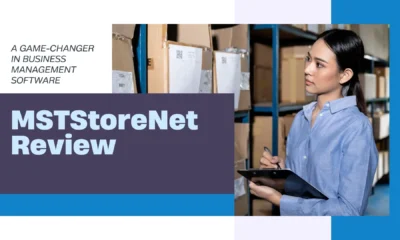TECHNOLOGY
Why the fintechzoom rolex submariner is a Must-Have for Fintech Enthusiasts

The world of fintech is on fire, reshaping how we think about money, investments, and technology. With the rise of digital currencies, blockchain advancements, and innovative financial solutions, it’s no wonder that enthusiasts are eager to showcase not just their knowledge but also their style. Enter the Fintechzoom Rolex Submariner—a watch that embodies luxury while resonating deeply with those who live and breathe finance. For many in the fintech community, this timepiece isn’t just a tool for telling time; it’s a statement piece brimming with heritage and precision. As fintech continues to evolve at breakneck speed, owning something as iconic as the Rolex Submariner has become more than just an accessory—it’s a badge of honor among industry aficionados.
The History of Rolex Submariner
The Rolex Submariner made its debut in 1953, designed specifically for divers. Its pioneering features set a new standard in underwater timekeeping.
Crafted from durable materials, the watch was engineered to withstand extreme conditions. The Submariner’s iconic rotating bezel allowed divers to track elapsed time with precision.
Rolex gained recognition as a luxury brand, and the Submariner quickly became synonymous with adventure and exploration. Over decades, it evolved through various models while retaining its classic appeal.
Celebrities and sports icons embraced the watch, further enhancing its allure. Today, it symbolizes both sophistication and practicality within the world of high-end horology.
Collectors chase vintage editions; each piece tells a unique story tied to innovation in diving technology. The legacy of the Rolex Submariner continues to thrive as an emblem of excellence across different realms.
How Fintech Enthusiasts are Embracing the Rolex Submariner
Fintech enthusiasts are increasingly turning to the Rolex Submariner as a symbol of success and sophistication. This iconic watch resonates with those in the financial technology sector, reflecting their innovative spirit.
The sleek design and robust functionality make it an ideal accessory for professionals who thrive on precision. Wearing a Submariner is more than just fashion; it’s about making a statement in an industry that values excellence.
Social media platforms buzz with images of fintech leaders flaunting their timepieces during networking events or conferences. The watch serves as both a conversation starter and a status symbol among peers.
Additionally, many see purchasing this luxury item as an investment. With its enduring value, the Rolex Submariner aligns perfectly with the savvy mindset of fintech aficionados who appreciate assets that appreciate over time.
Features and Benefits of the Fintechzoom Rolex Submariner
The Fintechzoom Rolex Submariner stands out with its iconic design and robust functionality. Crafted from high-quality stainless steel, it offers durability that matches the demands of an active lifestyle.
Its water-resistance up to 300 meters makes it a perfect companion for diving enthusiasts and those who enjoy outdoor adventures. The unidirectional bezel allows users to track elapsed time accurately, enhancing both practicality and style.
Equipped with a self-winding movement, this watch ensures precision without the need for batteries. Whether in the boardroom or on a yacht, its aesthetic appeal transitions effortlessly between occasions.
For fintech enthusiasts, the integration of advanced technology adds value. Real-time tracking features allow wearers to stay connected while managing investments seamlessly. This blend of luxury and utility is what truly sets the Fintechzoom Rolex Submariner apart in today’s fast-paced world.
Alternatives to the Fintechzoom Rolex Submariner
For those intrigued by the allure of luxury watches but seeking alternatives to the fintechzoom rolex submariner, there are several noteworthy options.
The Omega Seamaster is a popular choice. Known for its durability and stylish design, it resonates well with adventurers and professionals alike.
Another contender is the Tudor Black Bay. This timepiece combines classic aesthetics with modern mechanics, making it ideal for both casual wear and formal occasions.
Seiko’s Prospex line offers excellent functionality at an accessible price point. These dive watches embody reliability without compromising on style.
Consider the TAG Heuer Aquaracer. With its sporty appeal and robust features, it’s tailored for those who embrace an active lifestyle while still valuing elegance in their wristwear.
Why the Fintechzoom Rolex Submariner is a Must-Have for Fintech Enthusiasts
The Fintechzoom Rolex Submariner stands out as a symbol of sophistication in the fintech world. This iconic timepiece represents more than just luxury; it embodies the spirit of innovation and success that defines the industry.
As fintech continues to evolve, so does the need for tools that inspire confidence. The Rolex Submariner, with its flawless design and precision engineering, serves as a perfect companion for those navigating this fast-paced sector.
Its allure lies not only in aesthetics but also in functionality. Featuring water resistance and durability, it resonates with professionals who value reliability amid constant change.
Wearing this watch sends a strong message about commitment to excellence while reflecting an appreciation for craftsmanship. It’s not merely an accessory; it’s a statement piece that aligns seamlessly with the ethos of fintech enthusiasts everywhere.
Conclusion
As the fintech landscape continues to evolve, so do the symbols of success and sophistication within it. The fintechzoom Rolex Submariner stands out as a quintessential accessory for those immersed in this dynamic industry. Its rich history and impeccable craftsmanship resonate with a sense of achievement that aligns perfectly with the aspirations of many fintech enthusiasts.
The features packed into this iconic timepiece not only enhance its practicality but also symbolize a commitment to excellence—an ideal reflection for anyone navigating the fast-paced world of finance technology. This watch is more than just an accessory; it’s a statement piece that captures both timeless elegance and modern innovation.
While there are alternatives available, none quite embody the spirit of fintech like the fintechzoom Rolex Submariner does. Whether you’re attending conferences or sealing business deals, wearing this watch sends a strong message about your dedication to quality and professionalism.
Embracing such an emblematic item can elevate one’s status in any circle while providing functionality that complements today’s demanding lifestyle. For those truly invested in their journey through finance technology, adding the fintechzoom Rolex Submariner to their collection is not just desirable—it’s essential.
-

 BIOGRAPHY7 months ago
BIOGRAPHY7 months agoBehind the Scenes with Sandra Orlow: An Exclusive Interview
-

 HOME1 year ago
HOME1 year agoDiscovering Insights: A Deep Dive into the //vital-mag.net blog
-

 HOME1 year ago
HOME1 year agoSifangds in Action: Real-Life Applications and Success Stories
-

 BIOGRAPHY1 year ago
BIOGRAPHY1 year agoThe Woman Behind the Comedian: Meet Andrew Santino Wife




























